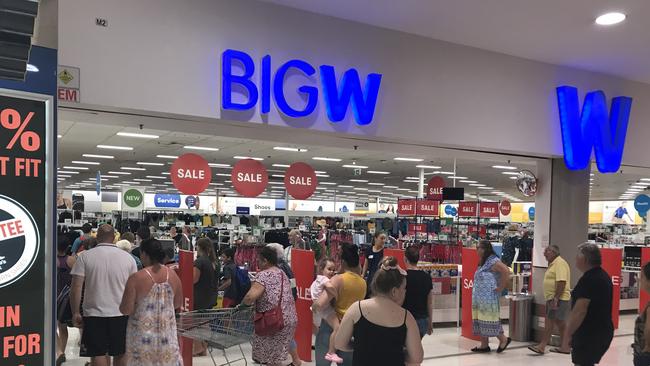Big W cuts print catalogue as retailers go digital
Big W is the latest retailer to stop printing its catalogue and put more resources into online shopping.

The nation’s $320bn retail sector is accelerating its pivot to a digital future in the midst of the coronavirus pandemic and home isolation that has seen a boom in online shopping, with Big W the latest retailer to stop printing its catalogue and put more resources into online shopping.
Big W has decided to stop printing and distributing its glossy colourful catalogue altogether, opting instead for a total digital presence.
It follows a move by Woolworths to cut the size of its popular specials catalogue by up to one third and a renewed shift by many leading retailers to ramp up investment in their websites and mobile apps.
The decision will be a big loss for struggling printing companies, while a shift to send out its Big W catalogue via social media platforms such as Facebook will strengthen their advertising power.
The rush by national retailers to online is being led by shoppers who are visiting websites, clicking on catalogues and using apps in record numbers since the outbreak of COVID-19 and home isolation that is creating a new, bulging army of savvy online consumers.
Big W, the general merchandise chain owned by Woolworths, has also warned its suppliers that while the broader Australian economy might stage a recovery towards the end of the year, they could be facing a world that is quite different from the one we had before the pandemic began.
In an update from Big W commercial general manager Teresa Rendo, obtained by The Australian, she informed the chain’s suppliers that the health crisis had altered consumer behaviour and the retailer would shift its investment to reflect that emerging trend.
That new reality would impact and direct how Big W spends its money in the media and how it reaches customers, including a decision to stop publishing a printed Big W catalogue.
“The impact of COVID-19 has been significant in terms of changing customer shopping behaviour, sentiment and how Australians consume media,’’ Ms Rendo told suppliers.
“In previous updates, we have shared that how customers are engaging with us is very different. Our digital penetration is almost three times last year and consumption of media has also changed.
“Since April we have moved to digital catalogues and reinvested into digital channels.
“This has seen more customer reach and improved performance of offers in catalogue.”
As part of Big W’s first quarter fiscal 2021 planning it has decided to stop printing the catalogue, with a digital version delivering much better returns for the chain.
“Therefore, we will continue the approach we’ve run throughout April and May. Instead of printing and distributing catalogues through letterboxes, we will instead repurpose investment into digital channels to amplify all catalogues throughout all of the first quarter,’’ Ms Rendo said in her letter to suppliers.
“All catalogues will be amplified via our BIG W Website & EDM (electronic direct mail), Woolworths Rewards, Stocard, Shopfully, Lasoo and Facebook. The combined reach of these channels far exceeds that of our traditional printed catalogue.”
Big W will, however, continue to print its annual toy catalogue but rather than distribute to customers via letterboxes it will instead distribute through Woolworths Stores, Big W home delivery orders and BIG W store copies.
Woolworths has similarly witnessed a boom in its online engagement with shoppers, and while it will still print a catalogue it has decided to cut down its size by as much as one third.
Woolworths has confirmed its weekly catalogue run of 36 to 40 pages will be trimmed to 28 pages later this year, with the power of online shown by the fact that in the past seven weeks Woolworths’ website has attracted 62 million page views and a record 162 million “page turns” of the digital catalogue.
Ms Rendo told Big W suppliers: “We expect that the impacts of COVID-19 will continue for some months and while we believe we may start the ‘recovery stage’ sometime during the first quarter of the 2021 financial year, we should not assume that life in Australia will naturally return to what it was.”
Big W, which is in the midst of a restructure that will see some stores closed, has made the decision to resume late night trade one week day evening per week to provide customers with flexibility to shop these hours safely.
Big W posted a full-year loss of $85m in 2019, a loss of $110m for the 2018 fiscal year and a loss of $151m in 2017.
For the first half of 2020 the chain returned to profit for the first time since 2016 with a pre-tax profit of $50m.



